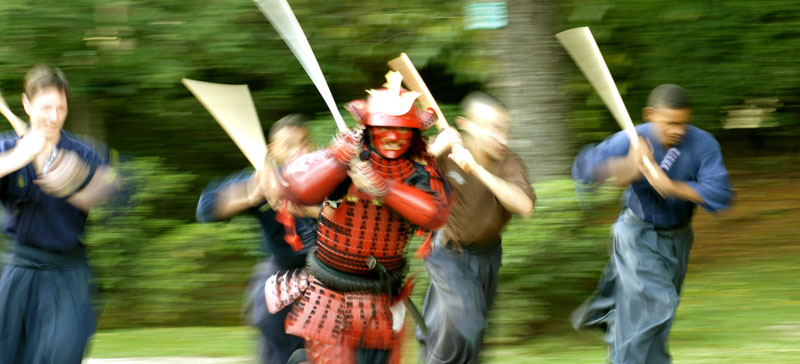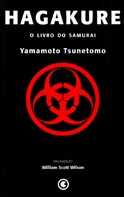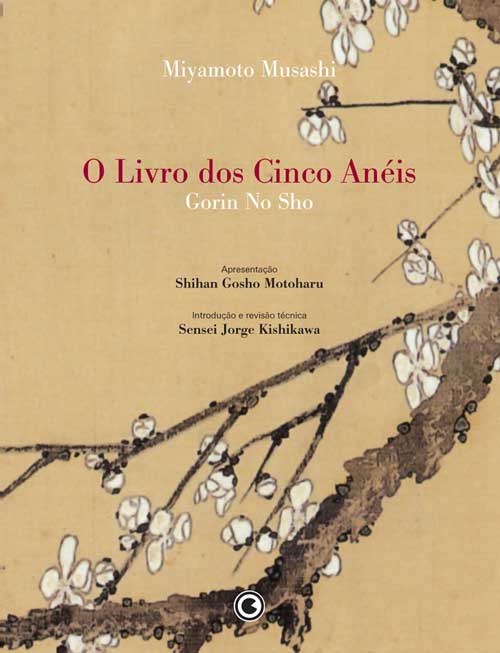
Bushido
The Way of the Samurai Warrior
By Niten ADM
The Bushidō ("bushi" means "warrior" and "do" "way"),the Honor Code of Samurai Warriors, raised the attention of many people since 2004, after the blockbuster The Last Samurai, depicting a character played by the multi awarded Tom Cruise in the role of an American war hero that witnessed a total twist in his own life from the day he started to be in touch with Samurais and the Bushidō.BUSHIDO (
The Bushidō appeared and started to be consolidated within the proper history of the Samurai Class, during Heian and Tokugawa Periods. The main values defended in the Bushidō are Justice (GI), Braveness (YUU), Benevolence/Compassion (JIN), Respect/Solemnity (REI), Integrity/Sincerity (MAKOTO), Honor (MEIYO) and Duty/Loyalty (CHUUGI). It is self-evident that nowadays, when the practice of these values is so scarce, Bushidō started to call modern society attention. Timeless values of Bushidō bring a clear notion of right and wrong, adding true ideals to people’s day by day life.
The origins of Bushidō is directly tied with Buddhism, Shintoism and Confucianism. From Buddhism, the Bushidō inherited the braveness to face death perils and the material detachment for mundane questions. From the Confucianism came the loyalty to the Master, the relation with the society and family name reverence. Within Bushidō the general lines ruling the wide variety of interpersonal relations (like Master and Disciple; Senpai and Kouhai; father and son; older brother and younger brother; husband and wife) are all arising from Confucianism. Shintoism brought the respect before the environmental, nature and the property (land), the appreciation of essential things (rather than the perfunctory ones), the spiritual approach to interact with all sort of things and persons, including places and, of course, the sword and the ancillary gear used by Samurai (including the sacred parts of garment).
A Samurai would prefer to die instead of being dishonored. The shame of a dishonor would be recognized as a kind of spiritual scarce that reached Samurai’s entire family (including and mainly the deceased ancestors). Dishonor was a shame that no Samurai could borne.
Livros sobre Bushido
Hagakure
Hagakure
In the Shadow of Leaves - 葉隠.
Gorin No Sho

Gorin No Sho
The Book of Five Rings
Bushido Nowadays
Two centuries after the end of Samurai Class, the Bushido is still alive in the Japanese culture. This is due to the fact that Japan, during nine Centuries (almost 1,000 years of tradition), put Bushidō on the base of all human relations.
After the end of II World War, the large damages suffered during the War was incredibly superseded within few decades. From a large defeat in the War, Japan spent 30 years working in order to became an international power. This recover was directly caused by a Bushidō spirit.
Despite these values in modern Japan are softened by early generations, there are places in Japan where Bushidō is still maintained and preserved in its original forms. These are the traditional Kobudo Dojōs.
In these Dojōs the Samurai Spirit still survives. There are people really dedicated, in this right 21st Century, to cultivate the symbolism of the warriors way of life to preserve honor and ethics to govern a nation.
The Bushidō at Niten Institut
Kishikawa Sensei uses Bushidō as his main topic to teach students to understand the Paths found in the Way of the Samurai, throughout common living and practicing among his disciples.
The Virtues of Bushido
-Justice
-Braveness
-Benevolence/Compassion
-Respect/Solemnity
-Integrity/Sincerity
-Honor
-Duty/Loyalty
- Conteśdo Relacionado
 Niten Ichi R
Miyamoto Musahi’s
Niten Ichi R
Miyamoto Musahi’s
style Master
Sensei Jorge
Master
Sensei Jorge
Kishikawa Kenjutsu
The Art of the
Kenjutsu
The Art of the
Samurai Sword
topo
 Home Niten
Home Niten
 +55 11 94294-8956
+55 11 94294-8956